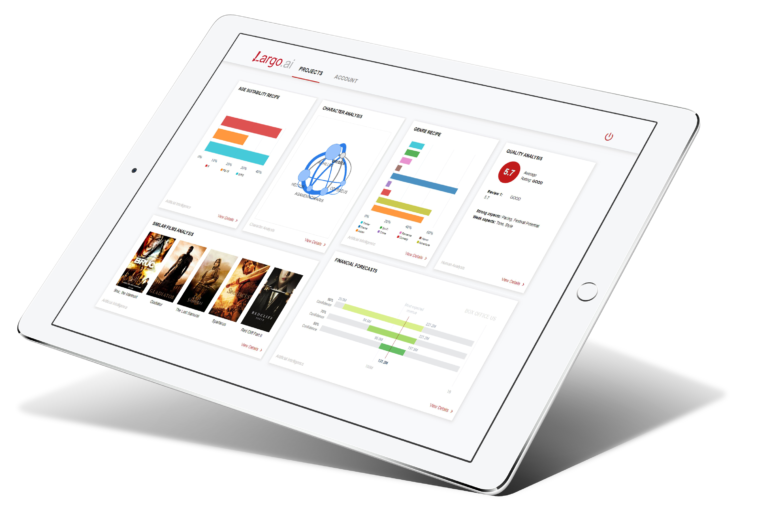
It has been said that understanding the “why” behind how AI systems make decisions is equally, if not more important than the actual result.
An obvious example of this is that AI systems rely on tens of thousands, sometimes millions, of data points. Knowing a system’s ‘model behavior’ or how and from what data points the system has extrapolated the answer, helps data scientists to ensure that the system is learning in the right way. So, while a single result is important, more important is the ‘why’ behind the result.
MIT News recently reported that a group of MIT and IBM researchers had finally made a breakthrough by developing the first system that allows scientists to receive quantifiable data readouts that allow them to understand this ‘why’ behind the insights or decisions that their system has extrapolated.
They called their technique, the “Shared Interest” model.
So what is this new technique and how exactly can it be applied in AI-assisted moviemaking? Let’s take a look.
The Shared Interest Model
Data scientists, machine learning, and artificial intelligence specialists have been, for years, trying to figure out a way to better understand what exactly their AI and ML systems learn, and more specifically, how they are using data points to make their decisions.
According to the data scientists who helped create it, the “Shared Interest” model allows users to “aggregate, sort, and rank these individual explanations to rapidly analyze a machine-learning model’s behavior.” – Source MIT News
https://news.mit.edu/2022/does-this-artificial-intelligence-think-human-0406
The aim of this model was ultimately to compare how similar the model’s reasoning would be to that of a human. If and when this model becomes implemented on a wide scale, it will have major ramifications for AI systems everywhere.
Fundamentally, the underlying approach allows engineers to painlessly and quickly examine accurate data regarding their AI’s model’s decision-making. Prior to the development of this technique, engineers and data scientists simply could not review and process every single data point in order to understand how it is having an impact on their AI system’s decision-making.
Since within any AI or ML system, there are often vast numbers of data points that might be influencing the results, engineers often struggle to accurately understand their systems and are, therefore, limited in how they train them. This, in turn, impacts accuracy.
Take, for example, a stock trading AI system. If the system has linked the likely price movement of any given stock to a low priority or an incorrect data point, in this case, let’s say, the price of a non-associated company, then it is likely to suffer accuracy errors in the future.

The Shared Interest Model in AI-assisted Moviemaking
AI-assisted filmmaking solutions provide an excellent example of the above problem.
We all understand the difference between a blockbuster movie that entertains, and so makes a lot of money, and a critically acclaimed movie that might not perform so well at the box office but becomes a classic.
Now, how can you train an AI system to understand what actually constitutes a ‘good film’ vs. a commercial one? Well, this is one of the biggest challenges actually facing AI film platforms.
At the current time, AI and ML data scientists and engineers are trying to enhance their systems to break out from their current services that include offering insights into which scripts/films will perform well at the box office and how elements of the film can be adjusted to help improve their commercial prospects, etc.
However, the goal of these companies is really to train their AI systems to understand how and why films become critically acclaimed too. This means that their AI engineers must master how to do this, and this involves understanding a lot more about their AI systems than current models allow.
Indeed, mastering the ability to predict which film will become a critical success is the Holy Grail for AI film solutions, particularly as it is a skill that we humans have never really mastered to a high degree either.
In the short to medium term, the Shared Interest model will allow AI film engineers to both improve the accuracy of their existing tools and develop some new ones. One example of the former is the ‘Actor suggestion’ feature that matches the most suitable actor to a particular character in a script.
Last year, the AI-assisted moviemaking platform, Largo.ai, made headlines when it predicted Henry Cavill as the most suitable actor to replace Daniel Craig as the next James Bond.
This debate still rages as we are yet to discover who the next Bond will be. However, Largo’s AI system used a complex web of data points to reach this conclusion and has already proven itself to be very accurate.
That said, the Shared Interest model will allow the team at Largo to understand much more comprehensively why and how their system chose Cavil. Naturally, this boost in understanding and ability to remove even single data points that were made in error will dramatically help to boost system accuracy.
As far as tools are concerned, imagine being a producer or director and being able to access a whole range of accurate tools that help to give you insight into your film.
Thanks to the understanding and refinement that the Shared interest model offers, in the future, film professionals will be able to access and gain insights on everything from its commercial vs. artistic value to lighting and props suggestions.
While the model will need to be refined before being turned into tools that AI engineers can get their hands on, it is certain that, once it has been, it won’t just be the AI-assisted moviemaking platforms that benefit from this exciting new technique. Within the next decade, it might well be that every AI system you use or backs up the services that you use, will be benefiting from the Shared interest model.





Stay connected